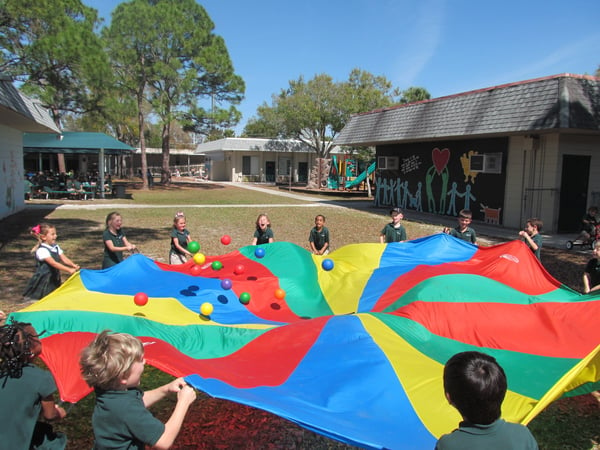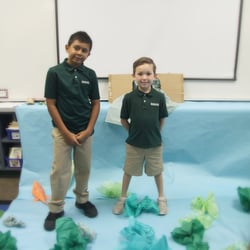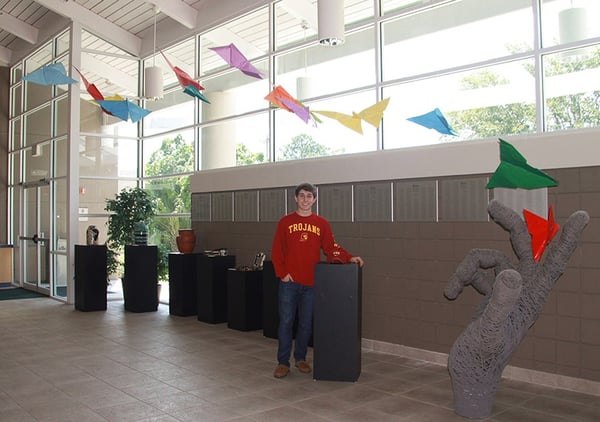When I vacation with my daughter, Mila, I always look for a local playground. Although she is a good travel buddy, I know my child can only take so much of being a tourist. Watching her play in a group of children, I often find myself reflecting on her childhood and education. My role as Head of the Experiential and Lower Schools for Shorecrest puts me in a unique position to consider how our image of a child informs what we, as parents and faculty look for in a school.

On a trip to Seattle, Mila played for hours on a small merry-go-round with a very diverse group of children from ages two to sixteen. Their shared joy was apparent as they worked together to make the apparatus move at different speeds and lengths of time. Some spins were just enough to go around a few times, and others made the world turn upside down! As I watched the children, many speaking different languages, I made some observations.
- Collaboration
 The children had a common purpose: to have fun, and to be a part of the fun. The children easily worked together, helped each other, solved problems, listened to one another even when they spoke different languages, and cared for each other. Whenever a child wanted to get off or on, someone acted or spoke up to make it happen. The children made sensory explorations of the space around the merry-go-round, it’s shape and the ground. They took risks, made friends, and laughed together. It was really beautiful. No adults interfering. All kids -- and honestly, no problems. Children got on and off, and back on again.
The children had a common purpose: to have fun, and to be a part of the fun. The children easily worked together, helped each other, solved problems, listened to one another even when they spoke different languages, and cared for each other. Whenever a child wanted to get off or on, someone acted or spoke up to make it happen. The children made sensory explorations of the space around the merry-go-round, it’s shape and the ground. They took risks, made friends, and laughed together. It was really beautiful. No adults interfering. All kids -- and honestly, no problems. Children got on and off, and back on again.
- Commitment to Student Competence
A photo I took that day captured the heart of our Lower School’s image of a child. Our community sees children as competent and capable. As teachers and administrators, we know students are smart, strong, in tune, creative, funny, powerful, sensory seeking, relationship seeking, caring individuals, and so much more. Everyone in our community believes deeply in each student’s potential for learning. That’s where our school begins. Our image of the child informs our pedagogy, language, and the learning environment.
As Vivian Wallace, one of my favorite mentor-teachers from the Central Park East School would say, “Start with noticing what the student can do, Lisa.” Children are so capable. It is our job as adults to develop their potential for learning.

- Collective Vision
We all have an image of children inside of us. This image informs how we behave with children, how we talk to them, how we listen to them, how we observe them, how we support their learning and how we recognize learning. If an adult’s image of a young student is one of helplessness, than the adult will act toward the child in a certain way. The adult’s interactions with the student are based in how he or she sees the child.
Children are so smart, so aware of their environment and all the interactions — especially the interactions between adults. They “read” adults, and they can tell how adults view children. They understand when adults model collaboration and talk to one another with respect, kindness, and humor.
From these interactions, children form images of teenagers and grown-ups, and those images become the basis for learning and development. As the educator Loris Malaguzzi shared, “children know what adults care about and what they think is interesting, worth doing, and worth taking the time to plan and prepare for.”
It is incumbent on parents, teachers and administrators to ask ourselves and our school: What is OUR image of a child? How do we focus that image in order to allow children to reach their potential?
We invite you to see how the Shorecrest community collaborates to bring our image of a child into focus. Join us on campus for an Admissions event or schedule your personal tour.

















